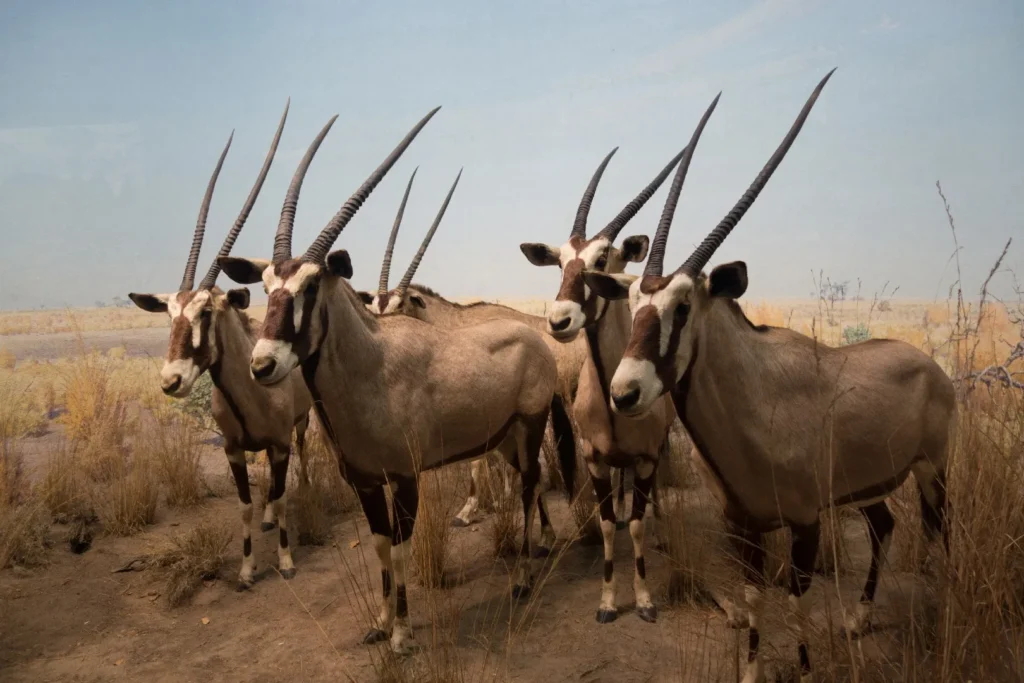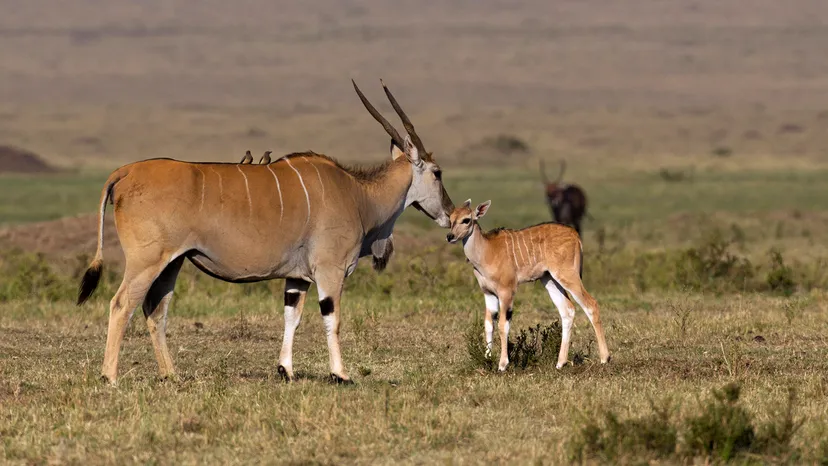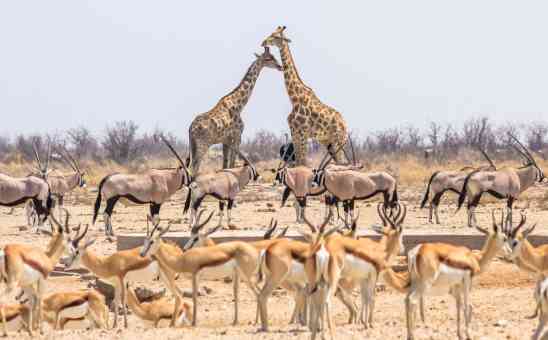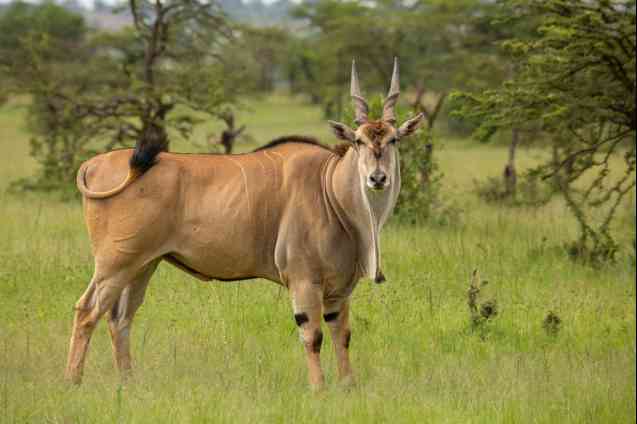Gemsbok vs Eland: Comparing Africa’s Iconic Antelopes & Where to See Them
Gemsbok vs Eland. Africa’s wilderness is home to some of the most fascinating antelope species, and among the most iconic are the gemsbok and the eland. While both are striking in appearance and impressive in size, they differ in habitat, behaviour, and cultural significance. If you are planning a safari, understanding these differences will enrich your experience and help you appreciate the diversity of Africa’s wildlife.
Introduction to Gemsbok

The gemsbok (Oryx gazella) is a large antelope species best known for its dramatic appearance. With long, spear-like horns and bold black-and-white facial markings, the gemsbok is instantly recognizable. It thrives in arid regions such as the Kalahari Desert, where it has adapted to survive harsh conditions with little water. Gemsbok are powerful and resilient, capable of traveling long distances across dry landscapes in search of food.
Introduction to Eland

The eland, on the other hand, is the largest of all antelope species. Towering in size, males can weigh up to 900 kilograms, making them even larger than some domestic cattle. Despite their bulk, elands are remarkably agile and can jump fences over two meters high. They are generally calm and social animals, often found in herds that roam savannas, grasslands, and open woodlands. Two main species exist: the common eland and the giant eland, each with unique ranges across Africa.
Physical Differences
Gemsbok are sleek and built for endurance in dry regions. Their straight, sharp horns—present in both males and females—can reach up to 85 centimeters, giving them a powerful defense against predators. Their tan coats blend with desert surroundings, while the black-and-white facial mask makes them particularly striking.
Elands are bulkier and less dramatically marked. Males have spiral horns that can grow over a meter long and a distinctive dewlap hanging from the throat. Their coats are usually light brown with faint vertical stripes, helping them blend into grasslands and open savannas.
Habitat and Range
The gemsbok is primarily found in southern Africa, particularly in Namibia, Botswana, and parts of South Africa. Its ability to thrive in deserts and semi-deserts makes it one of the most emblematic species of the Kalahari.
The eland has a wider range. The common eland roams much of eastern and southern Africa, while the giant eland inhabits parts of Central and West Africa. Elands prefer savannas, grasslands, and lightly wooded areas where food and cover are plentiful.
Behavior and Diet
Gemsbok survive in environments where water is scarce, relying on moisture-rich plants like melons and roots. They can withstand extreme heat, making them one of the most desert-adapted antelopes.
Elands feed on grasses, leaves, and fruits. Because of their size, they often need more resources, and they move in herds to graze efficiently. Despite their large bodies, they are not aggressive and are more likely to flee than fight when threatened.
Cultural and Safari Significance
The gemsbok is a national symbol of Namibia, appearing on the country’s coat of arms. Its resilience and beauty make it a sought-after sighting for safari-goers exploring Namibia’s deserts.
The eland holds cultural importance in many African traditions. Ancient San rock art frequently depicted elands, associating them with spirituality and fertility. On safari, their sheer size and elegance make them an unforgettable sighting.
Where to See Them on Safari
- Best places to see gemsbok: Etosha National Park (Namibia), Kgalagadi Transfrontier Park (South Africa/Botswana), and central Botswana’s arid reserves.
- Best places to see eland: Serengeti and Ngorongoro (Tanzania), Kruger National Park (South Africa), Kafue and South Luangwa (Zambia), and Bwindi Impenetrable Forest edges (Uganda, though less common).

Gemsbok vs Eland: Which is More Impressive?
While the gemsbok captivates with its desert adaptations and striking looks, the eland impresses with its massive size and gentle nature. The choice of which is “more impressive” often depends on where you travel. Desert adventurers will treasure sightings of gemsbok, while those exploring savannas and woodlands will likely encounter elands in larger numbers. Both species highlight the diversity of African wildlife and showcase the continent’s unique ecosystems.
Plan Your Safari with African Wild Trekkers
Whether you want to track gemsbok across Namibia’s deserts or watch elands grazing in East Africa’s open plains, African Wild Trekkers can design the perfect safari experience. We specialize in creating itineraries that take you to the best destinations for iconic antelope sightings and beyond.
Book Your Safari Today
Contact African Wild Trekkers and let us help you craft a memorable safari, where you can encounter Africa’s iconic antelopes and much more.
